People have to bend over to go under the building’s water tank to go to the next unit to use elevator every time the elevator fails. Only 4 out of 26 elevators in an apartment complex pass the technical safety inspection, yet the elevators still operate every day. Pulley, wire ropes wear out beyond the allowable limit, the surface of the wire rope appears red rust, the test results are clear, but people have no choice but to accept and wait.
Decade of horrors
In March 2018, people shivered when they looked at the images of old people, children, even pregnant women and wounded soldiers who had to tiptoe on the roof to another unit to take the elevator at G9’s house in the Xuan La resettlement area (Bac Tu Liem, Hanoi). The reason is that the building has 3 units, there are 2 units that have failed elevator. But until now, at the end of 2021, the same situation has been repeated at house G, Den Lu resettlement area when people must bend over to go under the building’s water tank to go to the neighboring unit to take the elevator, every time the elevator breaks down. Nearly 500 people of the house G in the Den Lu resettlement area (Hoang Mai, Hanoi) always live with frustration and fear when 2 out of 4 elevators here are completely broken, the other 2 frequently have error. And this building is just the epitome of the degradation in the resettlement areas of Hanoi, where the elevator is the main means of people’s transportation.
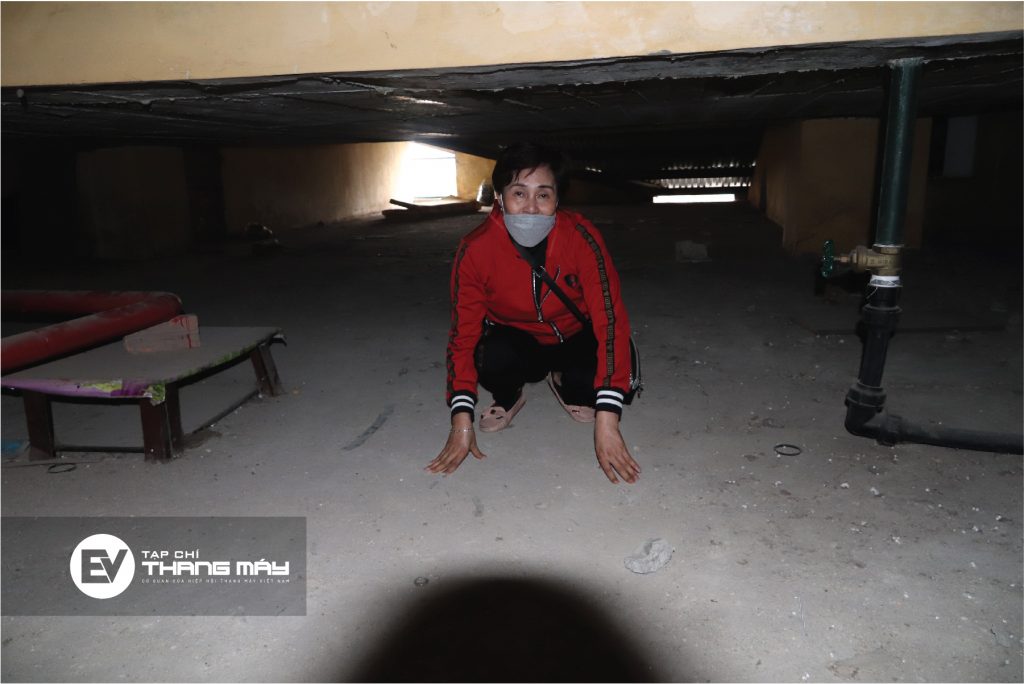
People have to climb up to the rooftop and then go through the water tank of the building, to the opposite unit, just to use the elevator at house G, Den Lu resettlement area.
The two elevators that are still in operation of the G house also have frequent problems such as running over the floor, the noise is too loud, the door cannot be opened, causing the passengers to be locked in the cabin, etc. Being locked in the elevator is a very common thing for people in the G building. Not only that, when it rains heavily, the water floods the elevator floor and no one dares to take the elevator for fear of being electrocuted. There was a time when the wire rope is broken, causing many people to be afraid,” shared Mr. Chu Van Huan – a heavily wounded soldier currently living on the 11th floor of the building.
In a petition sent to the authorities, Ms. Do Thi Minh, the leader of the 29th residential group, raised the problems related to the elevator that people at G house have suffered for many years. Firstly, at G house, there are many beneficial policies such as war invalids, former youth volunteers, retired cadres, the elderly, etc., but there is a lack of elevators. Ms. Minh said that the number of elevators for each building has been clearly specified by the state in the legal documents on apartment buildings, but for many years now, two elevators have completely broken down, hundreds of households in the apartment building G had to jostle around in two elevators. Secondly, the remaining two elevators have been maintained but still have frequent problems, especially the March 2021 inspection results that both elevators are not technically safe but continue to operate, this is a potential hazard in each use of the lift.

People’s “letter for help” sent to authorities raising concerns about the current status of the elevator at house G, Den Lu resettlement area
Only 4 out of 26 elevators in Den Lu Resettlement Area achieved technical safety at the March 2021 inspection. The rest are elevators that are completely damaged, so they are not tested or fail to pass the inspection, but still operate. People here are using unsafe travel devices every day such as “car without brakes”. Not only here, many other apartment buildings in Hanoi City and nationwide also have a similar situation, Elevator Magazine will continue to investigate and inform about this situation.
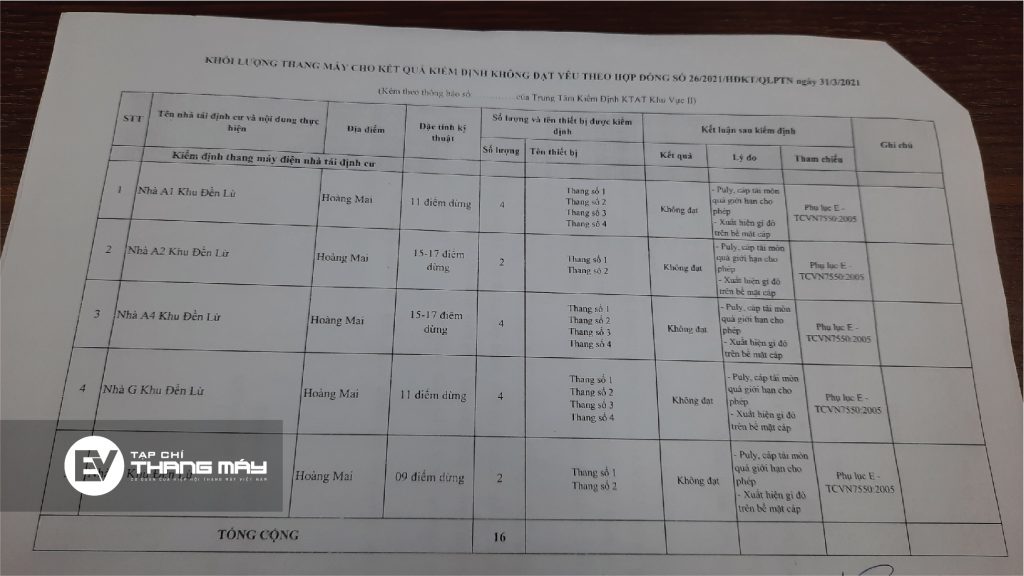
Report of the elevator does not meet the safety technical conditions from the Center for Technical Safety of Area 2, the inspection result in March 2021 has only 4 elevators out of a total of 26 elevators in Den Lu resettlement pass the inspection, the reasons for not passing the inspection show that the risk of problems with these elevators is very high
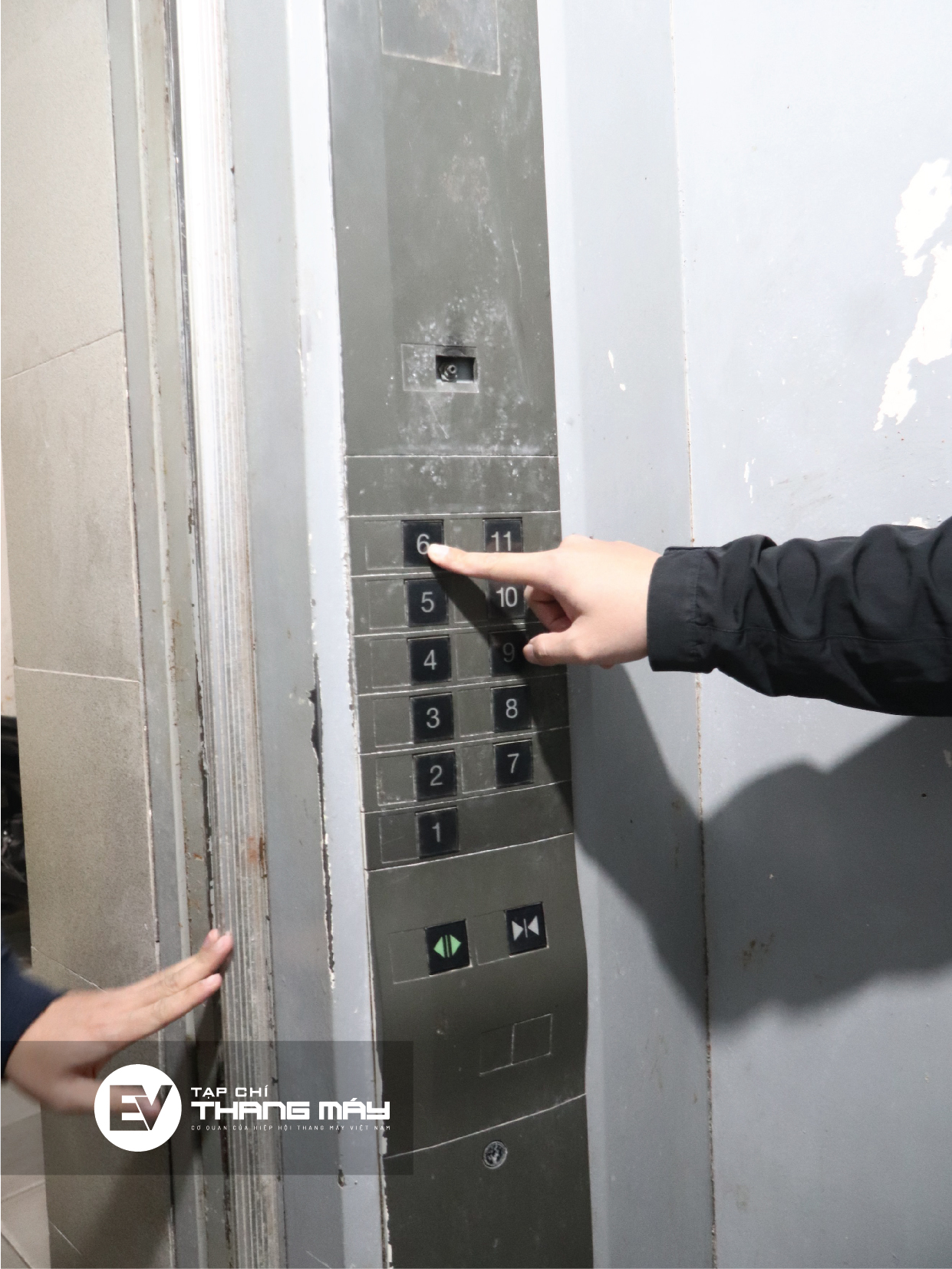
Elevator has deteriorated, damaged a lot, Intercom system and emergency bell do not work
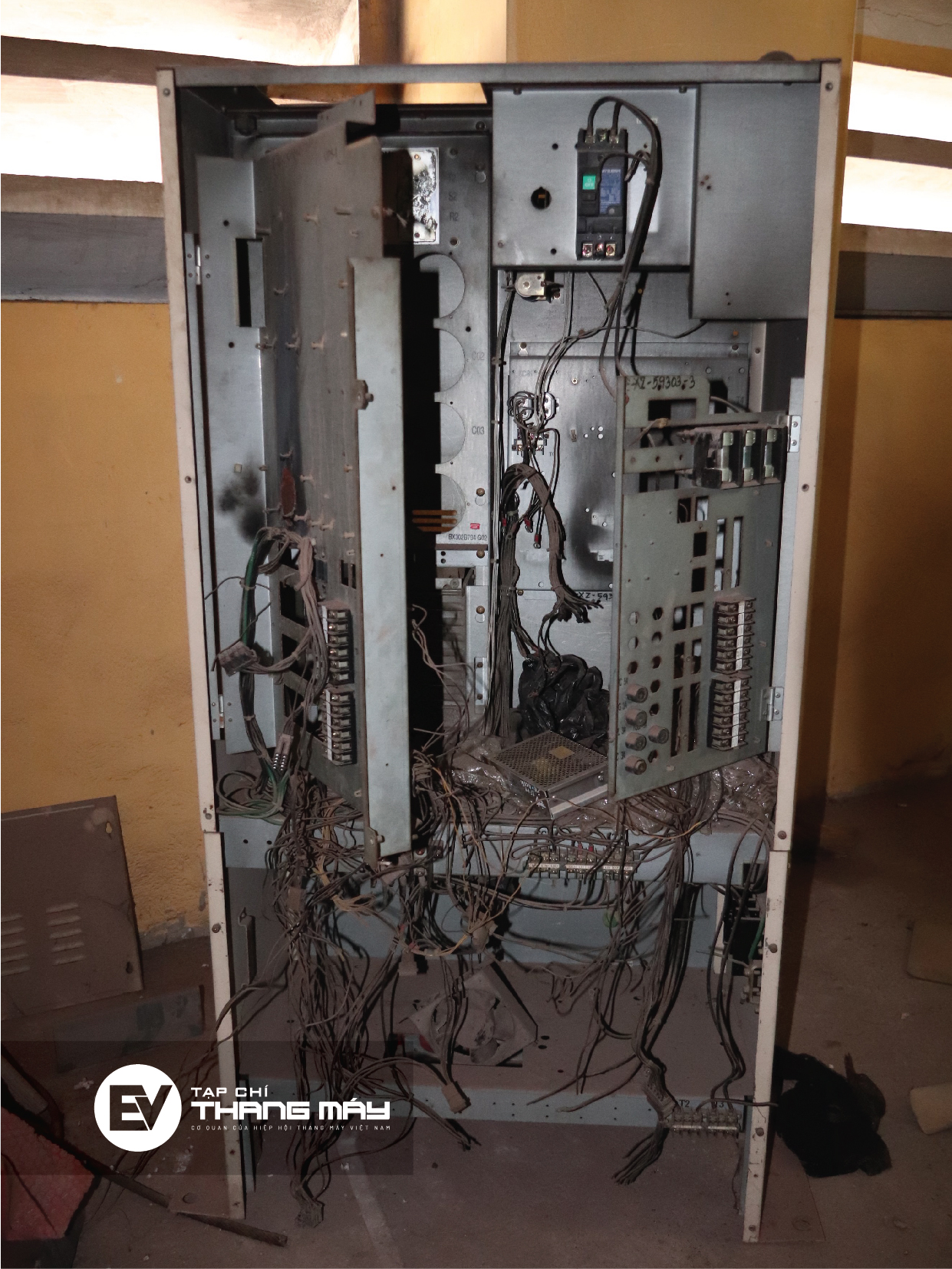
The elevator’s empty control cabinet has been broken for many years
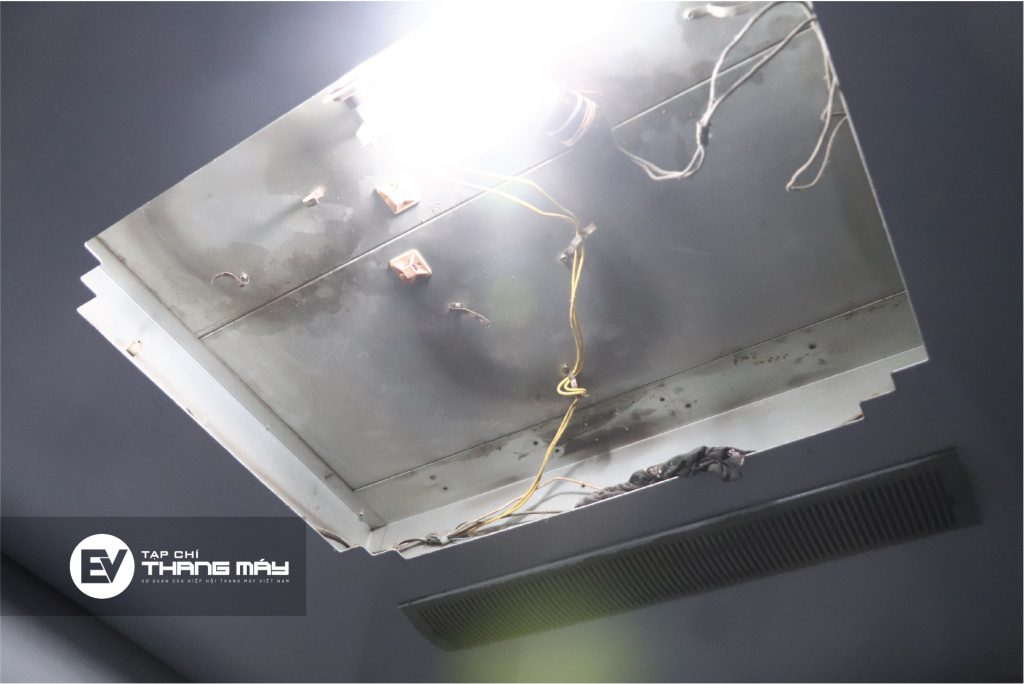
Elevator roof lost both covers for electrical equipment, causing many people to fear electric shock
The problem of elevator safety does not only occur in resettlement areas, but even apartment buildings are also built to sell to people, the management of common assets including elevators will be even more difficult because of the lack of firm to take responsibility directly. The third decade of the 21st century is coming, when the lifespan of these elevators has reached the “threshold”, will we enter another “terrible decade” with bad news, risks and insecurities of people in apartment buildings?

Not only resettlement apartments, even high-class apartments, people also have a lot of problems with elevators. Above is the “Letter for help” from people sent to Elevator Magazine in October 2021.
Not irresponsible, but whose responsibility is it?
When the elevator has a problem, the management unit of this apartment complex has also made a report and a maintenance plan to the city departments. Specifically, Hanoi Housing Development and Management Company Limited, Urban Area Exploitation and Service Management Enterprise. This management company has made a proposal file to the Department of Construction since October 2020, this company has invited relevant departments to survey and check the status quo, but so far it is still waiting for approval by the Department of Construction to continue other procedures. But maintenance and repair need a plan, the proposed plan from this year is approved, it also needs to wait until next year to be put into practice. This waiting is too inadequate with the urgent and safety needs of people such as elevators.
Waiting for funding from the City for too long, the building management board also followed the wishes of the residents to directly invite the maintenance and repair unit to survey and repair. In those cases, the costs will be divided among the households in the building. However, the population in the resettlement areas are mostly low-income people and social policy beneficiaries. That means the actual facility maintenance fund is not enough to meet the maintenance needs here.
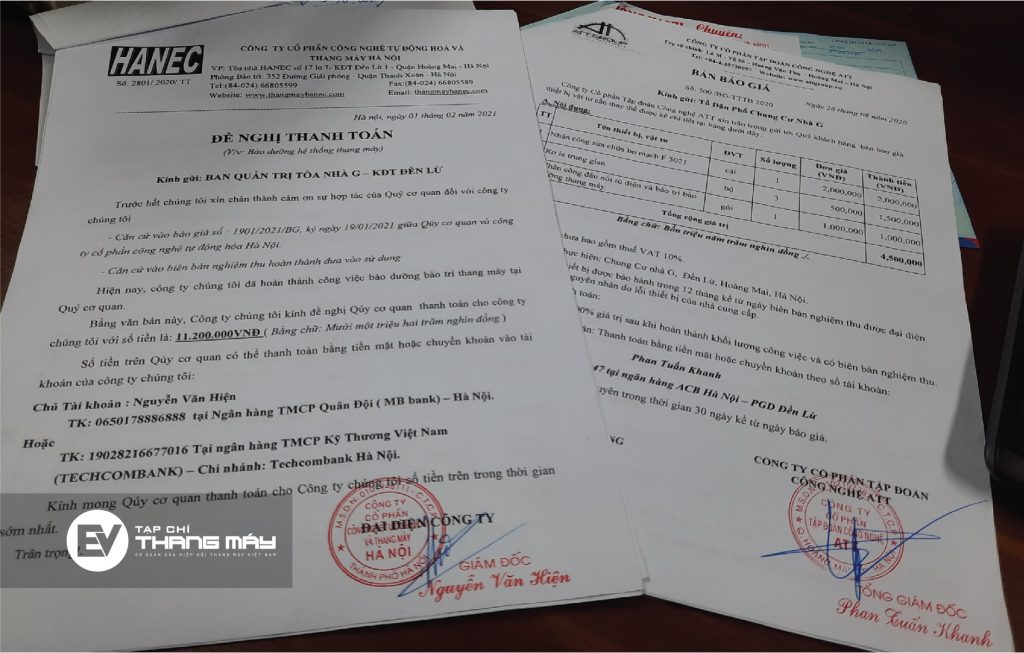
The elevator maintenance fee is paid by the building management on their own based on the people’s contribution
In addition to resettlement apartments, other apartment buildings also have this concern. According to Circular 42/2019/TT-BLDTB&XH, elevators during use must be periodically maintained at least once every 3 months. For elevators installed in apartment buildings, office buildings, commercial center buildings, hospitals, hotels, manufacturing plants, public areas (such as airports, train stations, etc.) then the periodic maintenance period is at least once a month. The investment unit has collected the maintenance fee right from the time of selling the house, but for many reasons, in many apartments, this fee is not handed over for this purpose. That leads to the fact that the elevator is not regularly maintained, even inspected and repaired when necessary. In these apartment buildings, elevators, as well as other equipment and common spaces, become the common property of residents. When problems with the elevator occur, there is no specific unit to take responsibility.
That is to say, no one is irresponsible. But who will be responsible when unsafe incidents occur?
Worried until when?
Broken elevators are still “piling up” waiting, unapproved elevators continue to operate with many dangers, like sitting on an airplane knowing that it is not safe or car without brakes. Even though people see an elevator without an inspection stamp, even if they have to walk on dangerous rooftops or go under the building’s water tank to continue entering an unsafe elevator, they still have to accept and wait.
Meanwhile, tragic elevator accidents continuously occur as a red alarm about the unsafe state of elevators in high-rise buildings, especially in apartment buildings. Typically, on November 29, 2020, two consecutive elevator incidents at B10A South Trung Yen resettlement house (Cau Giay, Hanoi) caused 3 injuries. Before that, also in the area of HH Linh Dam buildings, a stuck elevator incident made 8 residents of the building stuck in the elevator. On September 21, 2019, a security guard for unknown reasons entered the elevator that was stopped for maintenance at Lotus Sen Hong apartment building (Di An town, Binh Duong) and fell down the pit leading to death. In 2011, the apartment elevator CT3 Constrexim (Cau Giay, Hanoi) suddenly stopped due to a power outage, a man stepped out and fell from a height of 15m to death,…
Elevator accidents already exist and are hidden under many causes: equipment; user knowledge; quality from installation, warranty, maintenance, quality of inspection; rescue skills of lifeguards; capacity of the building management board, etc. From a basic means of urban transportation, now the “apartment elevator” seems to have become permanent and unavoidable insecurity of the people.
If the alley in poetry often leads you back to a cozy house, when will the people’s way back in urban areas really be safe and they can stop worrying? In order to find the answer, the Vietnam Elevator Association, Elevator Magazine will coordinate with authorities and managers to find solutions, respond to people’s cries for help and invite readers to ask for help. Stay tuned for the following periods.



